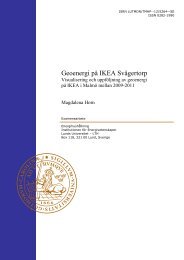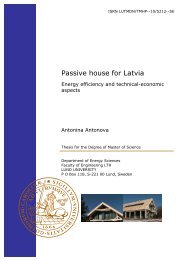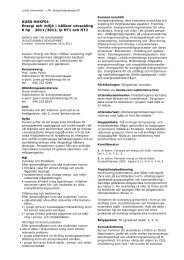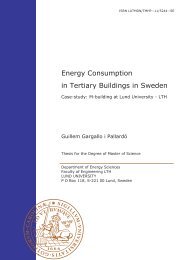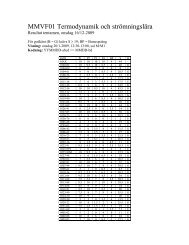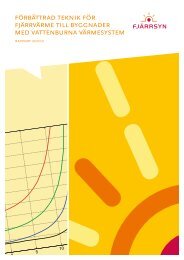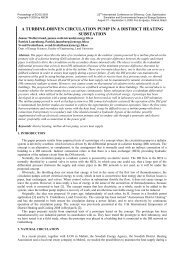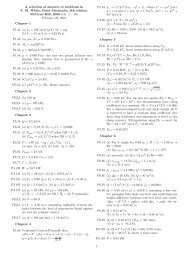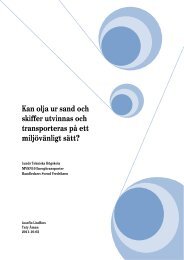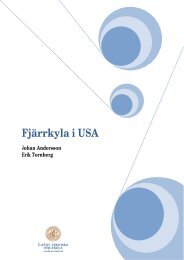MODERN THERMAL POWER PLANTS
MODERN THERMAL POWER PLANTS
MODERN THERMAL POWER PLANTS
Create successful ePaper yourself
Turn your PDF publications into a flip-book with our unique Google optimized e-Paper software.
short blade the end-wall losses and tip clearance will become dominant and<br />
manufacturing tolerance will also have larger impact as the component size is<br />
reduced.<br />
A high moisture content in the low-pressure turbine causes erosion of the blades<br />
and reduced efficiency. To limit the moisture content and allow for a further<br />
increase in the admittance pressure, reheating can be introduced to the cycle.<br />
Reheating means that the steam is reheated in the HRSG before it enters the<br />
intermediate turbine. The heat supplied to the reheating steam reduces the available<br />
heat for the evaporation, as can be seen in Figure 8, and will therefore reduce the<br />
mass flow of the cycle. Figure 8 also shows that the reduced mass flow causes the<br />
economizer temperature profile to diverge even more than in the case without<br />
reheating.<br />
3.3 Multi-pressure CCPPs<br />
Reheating and a high admittance pressure will lead to a large temperature difference<br />
in the economizer. If this temperature difference, or at least part of it, is used to<br />
drive a second Carnot cycle the efficiency can be further increased. This can be done<br />
by adding an additional low-pressure Rankine cycle, i.e., by dividing the economizer<br />
into two sections with a low-pressure evaporator between them, according to the<br />
Figure 9: A dual-pressure combined cycle with reheating (Reheating is the last part on the hot<br />
end)<br />
21




